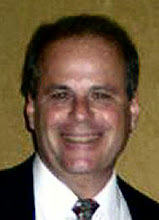From the December 18, 1910 edition of the defunct New-York Daily Tribune comes an article of interest to those of us who would like to understand the mindset of those who lived in the U.S. during the years of high immigration, especially those who wished to limit it. In this article the discussion is why the number of immigrants should or should not be restricted, and how it could be done.
The article begins:
"A few days ago, as required by law, the United States Immigration Commission filed a brief statement of its conclusions and recommendations, and announced that the materials it had gathered would ultimately be published in forty volumes. As a result of its labors it has recommended that for economic and social reasons the flow of the stream of immigrants should be reduced. Its investigations showed that, although the standards of living and of wages in the higher forms of skilled labor had not been materially affected, the volume of unskilled labor from Europe was so great that employers were under no compulsion to maintain a standard of wages. The result was that not only were industrial communities congested to a degree that interfered with rapid assimilation, but the unskilled laborer was not able to raise his standard of living.
The various well-known methods of putting on the brakes were suggested as a remedy, and emphasis was laid upon the literacy test. This test, however, was not emphasized without a protest from Congressman Bennet, a member of the commission, who argued that it was illogical as a selective measure.
The question whether to restrict or not to restrict is now squarely up to the American people and Congress. A number of men who have come into close contact with the subject from one standpoint or another have contributed their views in the form of interviews on the question of restriction. Among them are Senator William P. Dillingham, chairman of the United States Immigration Committee, who evidently may be described as a conservative restrictionist, and Congressman Burnett, of Alabama, a Democrat, who is considered the most radical restrictionist member of the commission. The proportion of those favoring restriction is much greater than one would be led to expect, in view of the growing interest in the immigrant as a man."
It was believed that too big a labor pool would drive down wages and thus lower the standard of living for those already living and working in the United States. A literacy test was proposed to weed out the "ignorant" and "illiterate," thereby making immigration a "selective" and not a "restrictive" process.
Reading these articles published within ten years either way of the turn of the twentieth century can be an eye-opener. It can "add meat," so to speak, to what we already understand about the immigration policies that were in place (or suggested) during the years of heavy immigration to the U.S.
This article will be included within the Museum's "A Multitude of Immmigrants..." exhibition that will be made available sometime before the end of the year.
The aforementioned article can be found at www.museumoffamilyhistory.com/mfh-multitude-immigrants-1910.12.18.htm.
Wednesday, October 14, 2009
To Decrease and Clarify Stream of Incoming Aliens, 1910
Subscribe to:
Post Comments (Atom)




No comments:
Post a Comment